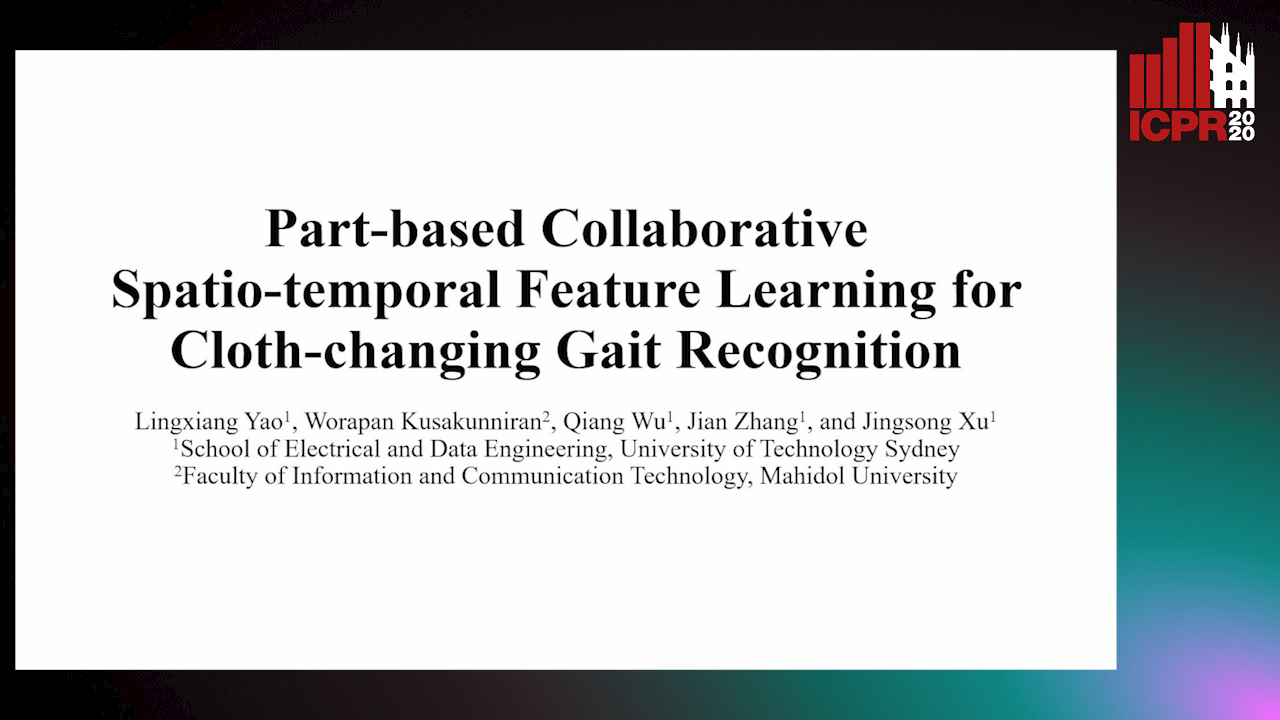Qiang Wu
Paper download is intended for registered attendees only, and is
subjected to the IEEE Copyright Policy. Any other use is strongly forbidden.
Papers from this author
Part-Based Collaborative Spatio-Temporal Feature Learning for Cloth-Changing Gait Recognition
Lingxiang Yao, Worapan Kusakunniran, Qiang Wu, Jian Zhang, Jingsong Xu

Auto-TLDR; Part-based Spatio-Temporal Feature Learning for Gait Recognition
Abstract Slides Poster Similar
In decades many gait recognition methods have been proposed using different techniques. However, due to a real-world scenario of clothing variations, a reduction of the recognition rate occurs for most of these methods. Thus in this paper, a part-based spatio-temporal feature learning method is proposed to tackle the problem of clothing variations for gait recognition. First, based~on the anatomical properties, human bodies are segmented into two regions, which are affected and unaffected by clothing variations. A learning network is particularly proposed in this paper to grasp principal spatio-temporal features from those unaffected regions. Different from most part-based methods with spatial or temporal features solely being utilized, in our method these two features~are associated in a more collaborative manner. Snapshots are created for each gait sequence from the H-W and T-W views. Stable spatial information is embedded in the H-W view and~adequate temporal information is embedded in the T-W view. An inherent relationship exists between these two views. Thus, a collaborative spatio-temporal feature will be hybridized by concatenating these correlative spatial and temporal information. The robustness and efficiency of our proposed method are validated by experiments on CASIA Gait Dataset B and OU-ISIR Treadmill Gait Dataset~B. Our proposed method can both achieve the state-of-the-art results on these two databases.